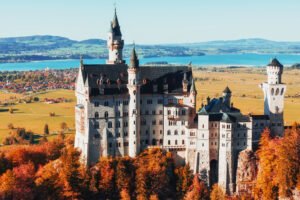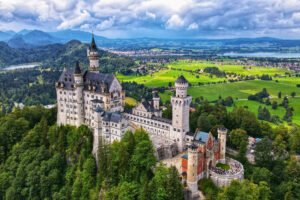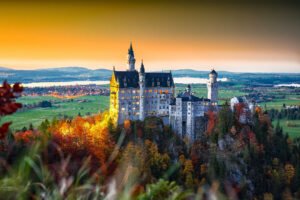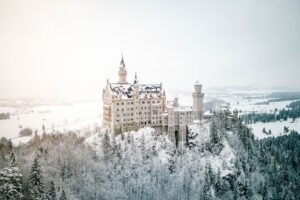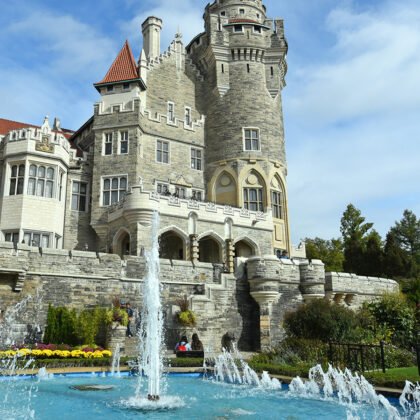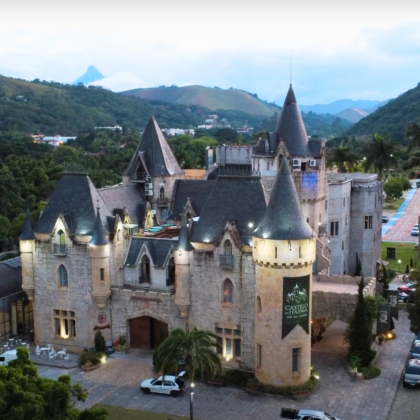✨ Perched high above the Bavarian countryside, Neuschwanstein Castle is the very definition of a fairytale brought to life. With its dreamy spires, breathtaking mountain backdrop, and enchanting story, it has inspired countless legends — and even Disney’s Cinderella Castle. Built as King Ludwig II’s romantic retreat, it remains one of the most beloved and iconic castles in the world, captivating millions of visitors each year.
Quick Facts
📍 Location: Schwangau, Bavaria, Germany
🏗️ Construction Period: Began in 1869 – Still unfinished (opened to public in 1886)
🏰 Architectural Style: Romanesque Revival with Gothic and Byzantine elements
🎭 Famous For: Inspiring Disney’s Cinderella Castle, King Ludwig II’s fantasy retreat.
👑 Notable Figures: King Ludwig II of Bavaria (also known as the “Fairy Tale King”)
🏆 UNESCO Status: Yes, one of the The Palaces of King Ludwig II of Bavaria designated in 2025
🌐 Official Website: https://www.neuschwanstein.de/englisch/tourist/index.htm
Map
Historical Context
Neuschwanstein Castle was commissioned in 1869 by King Ludwig II of Bavaria, known as the “Fairy Tale King.” Dreaming of a romantic medieval fortress, Ludwig designed Neuschwanstein as his personal retreat, inspired by German legends, operas of Richard Wagner, and chivalric ideals. The castle’s Romanesque Revival style blends Gothic and Byzantine elements, creating its iconic fairytale appearance. Built atop a rugged hill in Schwangau, it was never completed — Ludwig died mysteriously in 1886, leaving parts unfinished. Within weeks of his death, the castle opened to the public, quickly becoming a symbol of Bavarian heritage. Today, Neuschwanstein stands not just as a testament to Ludwig’s imagination, but as one of the world’s most visited and photographed castles, embodying the magic and mystery of a bygone era.
Gallery
Visiting Information
🗓️ Best Time to Visit: May, June, September, and early October
🗺️ Location Perks: Easily reached by train and bus from Munich, with stunning Alpine views all around.
⏳ Estimated Visit Duration: Plan to spend 2–3 hours exploring the castle and its grounds.
💡 Visiting tips: Head to Marienbrücke (Mary’s Bridge) for the most iconic view of the castle against the mountains.
Related Articles
- Neuschwanstein Castle: A Guide to Bavaria’s Iconic Fairytale Fortress,
- Top 10 Castles in Germany You Must Visit,
- Bavaria Castle Road Trip: The Ultimate 7-Day Itinerary Through Germany’s Fairytale Heart,
- The 25 Most Famous Castles in the World: Iconic Fortresses You Must See,
- 25 Best Castles to Visit in Europe: Iconic & Hidden Gems,
- The Ultimate Winter Castle Guide: Magical Castles to Visit This Holiday Season & in the New Year

